Lot n° 141
Estimation :
80000 - 100000
EUR
European gilt brass astrolabe, inscribed... - Lot 141 - Tessier & Sarrou et Associés
European gilt brass astrolabe, inscribed '1543 Eramas [sic] in cruce' [1543, we were at the cross or we were in pain], attributed to Michael Piquer.
Diam. 191 mm. H. (without ring) 213 mm. Thickness 9 mm.
Description
Spider
Of a considerable thickness, varying between 20 to 25 mm, the spider carries the positions of twenty-six stars on a symmetrical lattice.
They are, in order of right ascension :
Venter ceti zeta Whale Spica Scorpio alpha Virgo
Naris ceti alpha Whale Arcturus alpha Bouvier
Caput Algol beta Perseus Tegmus gamma Bouvier
Oculus Tauri alpha Taurus Laus meri. Librae alpha Libra
Pes sinister Orionis beta Orion Yed delta Serpentarian
Hircus alpha Cor Scorpio alpha Scorpio
Dexter Humerus Orionis alpha Orion Caput Hercules alpha
Canis major alpha Canis major Lyra alpha Vega
Canis minor alpha Canis minor Aquila alpha Eagle
Lucida Hydra alpha Hydra Cauda Capricorn delta
Cor leonis alpha Lion Museida Pegasi epsilon Pegasus
Fundus vasis alpha Crus Cup Aquarii delta Aquarius
Cauda lion beta Leo Hume. equi maj. alpha Pegasus
The stars are indicated at the end of the flame-shaped indexes and each one is accompanied by its name, its size, and its planetary symbol. The ecliptic circle is chamfered and bears the names of the signs of the zodiac, each divided at 30° by divisions numbered every ten. Construction lines, especially for the ecliptic, are visible on the reverse.
Mother
Void
Limb and throne
The limb has been cast separately and riveted (29 rivets), to the back and to the throne. It bears an hour scale (1-12/1-12) reading to 15 minutes, and a degree scale reading to one degree and numbered every ten. At the southern position (below the throne) is the name Auster, but all the other wind names are engraved on the outer edge of the limb at 3° distance.
They are: [Auster] Altanus Africus Favonius Corus [caurus] Circius south south, southwest south west west northwest west northwest
Boreas Aquilo Caecias Subsolanus Vulturnus Euronotus north east-northeast east southeast south-southeast
An asterisk above each name indicates its rhumb.
The throne is formed by two sculpted dolphins on either side of an ancient head in which Sottas saw Neptune. The whole is riveted to the limb. It carries the ring of suspension with trunnion.
Back
Reading from the circumference to the center, the back bears the following scales: i Degrees in four quadrants reading to 1° and numbered from ten to ten, 90-0/0-90/90-0/0-90. This arrangement allows measurements in altitude and zenith distance ii Zodiacal calendar (0° Aries = 10.25, February 28 days), with the names of the signs and their symbols, and the names of the months engraved in Roman letters.
iii The houses (or stations) of the moon beginning with prima at 20° Aries and ending with vigesi[mus] 8 at 20° Capricorn.
iv (in the upper two quarters), arcs for unequal hours encircling a circular calendar giving the solar cycle number, the Sunday letters and the lunar cycle numbers. Each scale begins with a cross. In the center is the date and inscription noted at the beginning of this notice.
v the lower two quarters is a twelve part shadow square.
Tympanums
There are two tympana (out of three), for latitudes 39/42° and 45/48°. Each one has the almicantarats spaced of 2° and crossed every 10° by the azimuths, and the lines (numbered) of the twelve houses of the sky. The arcs of the unequal hours, also numbered, are below the horizon. The circles of the two tropics and the equator are drawn and named.
A third tympanum that completes the astrolabe was made by the clockmaker Château frères & Cie at the order of Jules Sottas. It is empty except for the inscription, in an engraving that imitates the one on the instrument, 'Astrolabe trouvé à Avallon/
Dr Jules Sottas/Paris/6 April 1906'.
The alidade, ruler, (ostensor), and fixation are probably later even if the alidade had one of its sights awkwardly welded back in place.
Provenance: Found in an antique shop in Avallon before 1906 by Count Christian de Bertier de Sauvigny (1864-1939), organist and composer.
It was given to the owner's family.
It was presented at a meeting of the Société Astronomique de France on June 6, 1906 (Bulletin 321).
Afterwards, a description of the instrument was made at the request of Camille Flammarion.
It has been passed down through the family to its present owner.
Comment : This astrolabe, quite classical, was simply qualified by Sottas as 'European'. Advances in the study of astrolabes over the last century allow today an attribution to the Cenobite maker Michael Piquer. Thus the instrument becomes the seventh known astrolabe by his hand. This attribution depends on both the general appearance of the instrument and the specific similarities of the engraving.
The known astrolabes of P
My orders
Sale information
Sales conditions
Return to catalogue


